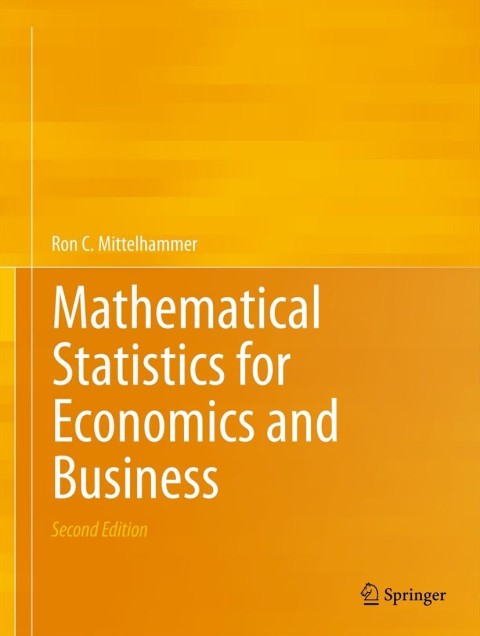Smith's Dairy is contemplating the profitability of utilizing a new bovine growth hormone for increasing the milk
Question:
Smith's Dairy is contemplating the profitability of utilizing a new bovine growth hormone for increasing the milk production of its cows. Smith's randomly selects
cows and administers given dosages of growth hormone at regular intervals. All animals are cared for identically except for the levels of hormone administered. A random sample of size \(n\) from the composite experiment measuring the total milk production over the lactation of each animal is represented by \(Y_{t}=\beta_{1}+\beta_{2} \mathrm{x}_{t}+\varepsilon_{t}, t=1, \ldots, n\), where the \(\varepsilon_{t}^{\prime}\) s are presumed to be iid with a common marginal density function \(f(z ;
a, b)=\frac{1}{b-a} I_{
(a, b)}(z)\)
with \(a=-b\), and \(b\) is some positive number.
The \(x_{t}\) values are the dosages of the growth hormone, measured in cc units, at levels defined by \(\mathbf{x}_{t}=t-10 \operatorname{trunc}\left(\frac{t-1}{10}ight), t=1,2,3, \ldots\)
and \(y_{t}\) is the milk production of the th dairy cow, measured in hundredweights.
(a) Is the least-squares estimator of \(\boldsymbol{\beta}\) (1) unbiased, (2) BLUE, (3) consistent, and/or (4) asymptotically normal? Justify your answer.
(b) Is the estimator \(S^{2}\) of \(\sigma^{2}\) (1) unbiased, (2) consistent, and/or (3) asymptotically normal? Justify your answer.
(Hint: The \(x_{t}^{\prime}\) s occur in a repeating sequence of the numbers \(1,2,3, \ldots, 10\). It follows that \(\sum_{t=1}^{n} \mathbf{x}_{t} / n ightarrow 5.5\) and \(\sum_{t=1}^{n} x_{t}^{2} / n ightarrow 38.5\).)
(c) In the outcome of a random sample of size 100, Smith's found that \(\mathbf{y}^{\prime} \mathbf{y}=4,454,656.3\) and \(\mathbf{x}^{\prime} \mathbf{y}=\left[\begin{array}{l}21097.673 \\ 117570.78\end{array}ight]\). Estimate the parameters of the linear model using \(\hat{\boldsymbol{\beta}}\) and \(S^{2}\).
(d) Given that raw milk sells for \(\$ 10\) per hundredweight, define a BLUE for the expected marginal revenue per cow obtained from administering the growth hormone. If the total cost of the hormone treatment per cow over the entire lactation is \(\$ 12\) per cc, and if the maximum allowable dose is \(10 \mathrm{cc}\), is it profitable for Smith's to utilize the hormone, based on the BLUE estimate of marginal revenue calculated above? Why or why not? If so, determine what level should be administered, and provide a BLUE estimate of the gain in profitability.
(e) Regarding Smith's linear model assumptions, are there other distributional assumptions that you would suggest for consideration besides the uniform distribution? Would this change any of your answers above? Would you suggest examining alternative functional forms for the relationship between milk production and hormone treatment? If so, would this affect your answers to the questions above?
Step by Step Answer:

Mathematical Statistics For Economics And Business
ISBN: 9781461450221
2nd Edition
Authors: Ron C.Mittelhammer





